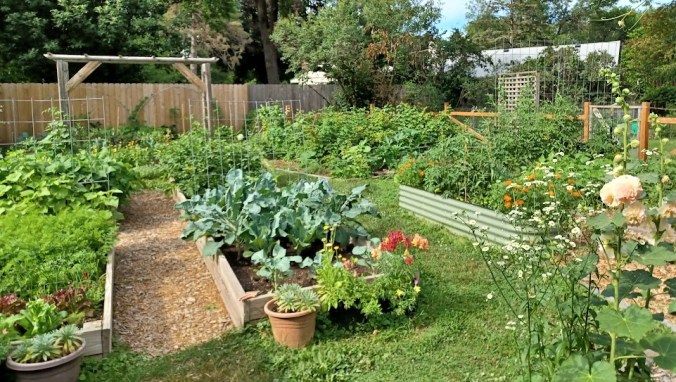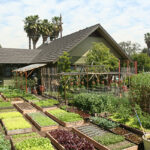Are you a homestead dreamer eager to embrace a more sustainable lifestyle? If so, composting is an essential practice to master. Composting for homesteaders not only reduces waste but also enriches your soil, ensuring bountiful crops and a thriving garden. In this guide, we’ll explore the ins and outs of composting, offering practical tips and insights to get you started.

What is Composting?
Composting is the natural process of recycling organic material, such as leaves and vegetable scraps, into a rich soil amendment known as compost. This process is essential for homesteaders as it creates nutrient-rich soil, reduces waste, and supports sustainable living.
Benefits of Composting for Homesteaders
1. Enriching Soil
Compost is often referred to as ‘black gold’ because of its ability to enrich soil with nutrients. It improves soil structure, enhances moisture retention, and promotes healthy root development, making it invaluable for homesteaders.
2. Reducing Waste
By composting, homesteaders can significantly reduce the amount of waste sent to landfills. This is not only environmentally friendly but also economically beneficial, as it reduces waste disposal costs.
3. Supporting Plant Growth
Compost provides plants with essential nutrients, promoting vigorous growth and reducing the need for chemical fertilizers. This is particularly important for those looking to maintain an organic homestead.
4. Encouraging Biodiversity
A well-managed compost heap attracts beneficial microorganisms and insects that help break down organic material. This biodiversity is crucial for maintaining a healthy and balanced ecosystem on your homestead.
Getting Started with Composting
1. Choosing the Right Composting Method
There are several composting methods available, each with its advantages. Some popular options include:
- Traditional Composting: This involves layering organic materials in a pile or bin and allowing nature to take its course.
- Vermicomposting: This method uses worms to break down organic material. It is ideal for urban settings or small spaces.
- Tumbler Composting: A compost tumbler speeds up the composting process by allowing you to turn the pile regularly, ensuring even decomposition.
2. Selecting Composting Materials
Understanding what can and cannot be composted is crucial. Common compostable materials include:
- Fruit and vegetable scraps
- Coffee grounds
- Eggshells
- Grass clippings
- Leaves
Avoid composting meat, dairy, and oily foods, as they can attract pests and slow down the composting process.
3. Managing Your Compost Pile
Proper management of your compost pile is essential for successful composting for homesteaders. Key factors to consider include:
- Moisture: Keep your compost pile moist but not waterlogged. A balance of green (nitrogen-rich) and brown (carbon-rich) materials will help maintain the right moisture levels.
- Aeration: Turning your compost pile regularly introduces oxygen, which is essential for decomposition.
- Temperature: A well-maintained compost pile will heat up as microorganisms break down materials. This heat is essential for killing weed seeds and pathogens.
4. Harvesting Your Compost
Your compost is ready to use when it is dark, crumbly, and earthy-smelling. This process can take anywhere from a few months to a year, depending on your composting method and conditions.
Using Compost on Your Homestead
1. Improving Garden Soil
Mix compost into your garden soil to improve its texture and fertility. This will enhance plant growth and yield.
2. Topdressing Lawns
Spread a thin layer of compost over your lawn to promote healthy grass growth and reduce the need for chemical fertilizers.
3. Mulching
Use compost as a natural mulch around plants to suppress weeds, retain moisture, and provide nutrients.
Common Composting Challenges and Solutions
1. Odor Issues
If your compost pile emits unpleasant odors, it may be too wet or lack aeration. Turn the pile and add dry materials like leaves or straw to remedy this.
2. Pest Problems
To deter pests, avoid composting meat and dairy products. Ensure your compost bin is secure and well-ventilated.
3. Slow Decomposition
If your compost pile is not breaking down, it may lack the right balance of materials or require more frequent turning. Adjust your mixture and aeration practices accordingly.
Advanced Composting Techniques
1. Hot Composting
Hot composting involves maintaining high temperatures in your compost pile to speed up decomposition. This method is ideal for homesteaders looking to produce compost quickly.
2. Bokashi Composting
Bokashi composting is an anaerobic process that ferments organic material using a special bran. It is suitable for homesteaders with limited outdoor space.
Backyard Homesteading Ideas
For more ideas on how to enhance your homesteading journey, explore the wide range of herb gardening options available. This can complement your composting efforts by providing fresh herbs for cooking and natural remedies.

FAQs about Composting for Homesteaders
1. How long does it take to make compost?
The time required to make compost varies depending on factors such as the composting method, materials used, and environmental conditions. On average, it can take anywhere from a few months to a year.
2. Can I compost in the winter?
Yes, composting can continue in the winter, although the process may slow down due to lower temperatures. Insulating your compost pile with straw or leaves can help maintain warmth and speed up decomposition.
3. What should I do if my compost pile attracts pests?
To prevent pests, avoid composting meat and dairy products. Ensure your compost bin is secure and well-ventilated. If pests persist, consider using a pest-proof compost bin.
By incorporating these composting for homesteaders techniques into your daily routine, you’ll contribute to a healthier environment and enjoy the benefits of nutrient-rich soil for your homestead. Embrace the journey towards sustainable living and watch your garden thrive!





